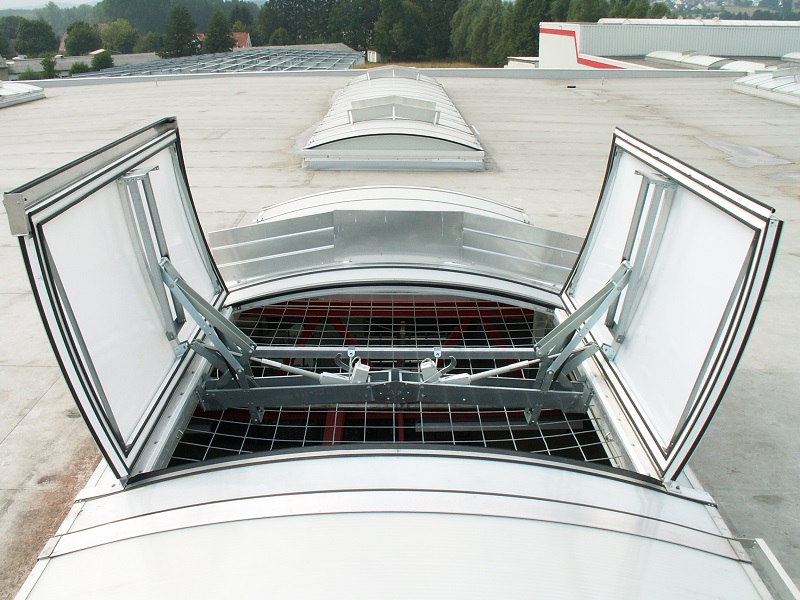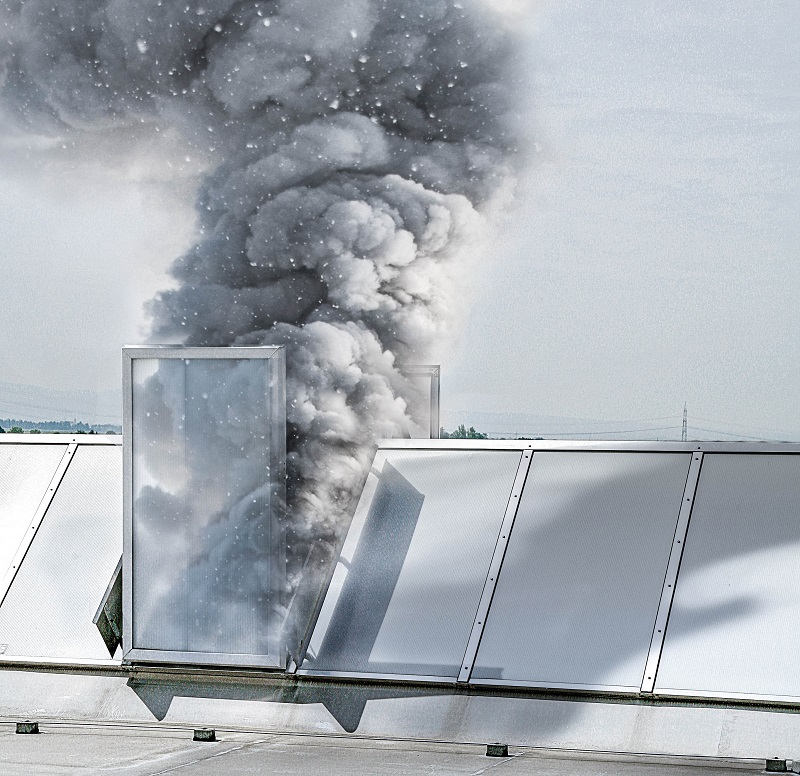For years, European Building Regulations have stipulated the inclusion of Smoke & Heat Exhaust Ventilation (SHEV) systems, as standard in new buildings.
As the UK becomes increasingly inclined to follow suit, General Manager of Jet Cox, Chris Lister, explains why the Building Industry needs to prepare for a growing number of SHEV specifications.

Europe is well versed in the manufacture, installation and commissioning of SHEV systems, so there seems little point reinventing the wheel. Since 2006, Europe has required all SHEVs to be certified in accordance with DIN EN 12101-2.
Whilst a number of UK manufacturers already work to these standards, Jet Cox has its history firmly rooted in Germany, where SHEV units are compulsory in all cases requiring a natural smoke vent. As such, they boast a long and successful track record of SHEV installations across Europe and the UK, in accordance with these standards.
The greatest immediate danger to building occupants in the event of a fire, is the smoke rather than the heat. Only 20% of fire deaths in the UK are caused by burns whilst 61% are related to smoke inhalation.
Smoke contains components that can each be lethal in its own way:
- Particles that can lodge in the lungs, eyes and digestive system
- Vapours that can poison if inhaled or absorbed through the skin
- Toxic Gases (eg carbon monoxide) that can be deadly, even in small quantities.
The principal aim of SHEV systems is to lead smoke, gases and heat out of burning buildings, whilst also keeping escape routes free of smoke and toxic fumes, allowing occupants out and emergency services in.
In addition to fire safety, SHEV systems provide controllable natural daylight and ventilation, helping to combat the causes of numerous human health problems.

Furthermore, systems designed to improve airflow, can positively impact on the long-term running costs and energy efficiency of a building, in comparison to alternative mechanical means such as cooling or air-conditioning units.
Whether UK Building Regulations are permanently changed to include the specification of SHEV units for all new build commercial and industrial premises, remains to be seen; but within the very near future, it’s likely that building owners and insurers will need to work more closely together, in reaching suitable solutions. Therefore, building owners should instigate this process wherever possible, to ensure their obligations are met.
To attain this ideal European model, it is recommended that the specified SHEV system should meet the following European Technical Specification:
- CE EN12101-2 Certified
- Certificate 1368-CPD-C-002/2009 (I.F.I Institute, Germany)
- Aerodynamic Free Area up to Aa2.74m² in accordance with DIN EN12102-2
- Snow Loads up to 2400N/m²
- Wind Loads up to 1500N/m²
- Low Ambient Temperature T(-15°)
- Heat Exposure B300
- Reaction to Fire Class E
- Opening Speed of less than 60 seconds.
Modular systems meeting these standards are available, offering off-site construction, keeping personnel to a minimum and offering no negative impact on project completion times.
SHEVs are a significant component of a building’s safety strategy, therefore correct commissioning and maintenance is absolutely crucial to ensure correct operation in the case of emergency. By drawing on the success of Europe’s experience and renowned build-quality, UK building planners, designers and SHEV manufacturers can now work together to produce some of our safest, healthiest buildings.





















